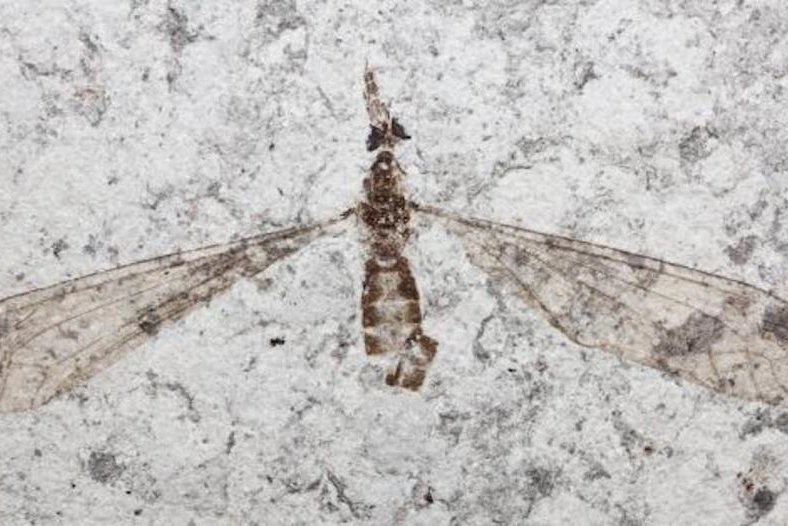1 of 2 |
Scientists found a natural pigment in the eyes of a fossilized crane fly. Photo by René Lyng Sylvestersen/Lund University
Aug. 15 (UPI) -- Scientists were surprised to find a natural pigment called eumelanin in the 54-million-year-old eyes of an ancient crane fly. The fossilized fly was recovered from Denmark's Fur Formation.
"We were surprised by what we found because we were not looking for, or expecting it," Johan Lindgren, an associate professor in the geology department at Lund University in Sweden, said in a news release.
Eumelanin, a type of melanin, is found in human eyes. After finding the pigment in the eyes of a prehistoric crane fly, scientists went looking for it in the eyes of living crane flies. Sure enough, it was there.
By comparing the ancient and modern crane fly eyes, scientists were able to gain a better understanding of how the fossilization process effects the composition and structure of an insect eye.
In addition to eumelanin, researchers also identified calcified ommatidial lenses. Researchers suggest that over time, the original chitinous material was replaced by calcium salts.
Scientists have previously hypothesized that trilobites, a diverse and widespread group of extinct marine arthropods from the Cambrian period, used mineralized lenses to see. The latest research -- published this week in the journal Nature -- suggests the hypothesis is flawed.
"The general view has been that trilobites had lenses made from single calcium carbonate crystals," study author Lindgren said. "However, they were probably much more similar to modern arthropods in that their eyes were primarily organic."
The compound eyes of arthropods, including insects and crustaceans, are made up of dozens of tiny light-sensitive ommatidia.















